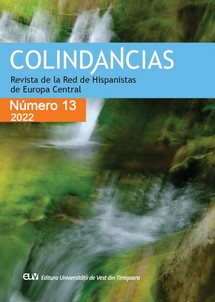Diario de un estudiante de Salamanca: la crónica inédita de Girolamo Da Sommaia (1603-1607), edición e introducción por George Haley. Contaminación e hibridación lingüística: el idiolecto toscano-castellano de un patritius florentinus.
Diario de un estudiante de Salamanca: the unpublished chronicle of Girolamo Da Sommaia (1603-1607), edited and introduced by George Haley. Code-mixing and linguistic hybridization: the Tuscan-Castilian idiolect of a patritius florentinus.
Author(s): Laura FalascaSubject(s): Phonetics / Phonology, Morphology, Syntax, Lexis, 17th Century, Philology, Theory of Literature, Italian literature
Published by: Editura Universităţii de Vest din Timişoara
Keywords: hybridisation; heteroglossia; crosslinguistic interaction; hispanisms; inter-linguistics;
Summary/Abstract: The scope of this article is to describe the code-mixing traits of the so-called Diario de un estudiante de Salamanca ―a personal chronicle recorded by Girolamo Da Sommaia, a Florentine student, while attending the renowned University― and to delve into the textual incidence and the distinctive features brought about by interference and code-switching between Tuscan L1, as the author’s native language, and Spanish, as the overall communication code in the context of his stay. The investigation provides an overview of the persistent crosslinguistic interference of the Castilian on the Italian writing shaped by Da Sommaia, heightened by the proximity of the two codes. Transfer and code-switching occur into the text on phonetic, morphosyntactic and lexical resource levels, resulting in a repertoire of heteroglot elements and merging, for both languages, into a not yet regularized usus scribendi. Background information on the life of the patrician student, the origin and motivations of the journal, the acquisition and conservation of the manuscript containing the text, next to the most relevant philological criteria adopted by its publisher, are also provided to locate the historical framework and sociocultural setting of the communicative situation experienced by the author.
Journal: Colindancias - Revista de la Red de Hispanistas de Europa Central
- Issue Year: 2023
- Issue No: 13
- Page Range: 171-205
- Page Count: 35
- Language: Spanish

